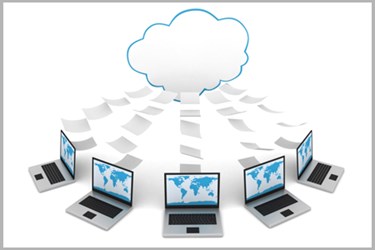Cloud Solutions' Benefits For Healthcare Extend Beyond Computing — To Safety
By Megan Williams, contributing writer

By now you’re aware of the benefits that cloud computing can bring you and your customers. From more affordable infrastructure to an answer to the BYOD question — the technology is being used to tackle problems in myriad ways. But can it go beyond just fixing tech woes?
In healthcare, it looks like it can, and that it can do it at multiple levels. Overall though, the cloud addresses patient safety one very important way — it helps get existing measures over the hurdle of lagging technology that characterizes so much of the healthcare industry.
Infrastructure Gets Easier
This goes well beyond cost savings. Much of the risk that IT presents to patient safety, centers on lost information, old information, and general mistakes. One of the most basic solutions is moving facilities from an infrastructure based on its own well-being, to one focused on patient-centered needs. The flexibility (and yes, affordability) of cloud solutions gives facilities and other entities options they did not have before in coordinating patient care, and also in managing complex, and sensitive data. A more unified data system also cuts back on the time clinical staff spends accessing disparate systems, allowing them to spend more time addressing patient needs (a core element of patient safety).
EHR/EMR Reforms Are Simplified
The much-touted electronic health records have become the norm in modern healthcare and their use is being encouraged from every direction — from government incentive programs to client curiosity. Beyond eliminating cumbersome paper trails, they are also seen as a direct contributor in the fight to improve patient safety. Through new Meaningful Use standards, they have been inextricably tied to the improved patient results. Getting them implemented, however, has proven to be a challenge. Cost, IT resource requirements, implementation difficulties and scalability all stand as hurdles in the use of EHR. Cloud computing, through its flexibility (great for small practices), automatic update capabilities (EHR, medical coding, and security standards are updated frequently) and simple implementation processes addresses many provider concerns around the next generation of medical record keeping.
Clinical Applications Abound
This touches on the EHR point a bit, but when you combine the cloud with insightful use of the data in patient records, you get results that change healthcare communities.
In North Carolina, for example, a 12-hospital, not-for-profit system decided to tackle its inpatient glycemic management problem, using the cloud to create its eGlycemic Management System. The system is integrated with EHRs, and it helps improve workflow and nursing efficiency. The results? The system saw a 79 percent improvement over the national average across eight hospitals. The initiative meant dramatic reductions in readmissions and length of patient stay, as well as patient safety improvements.
Paul Chidester, M.D., VP of medical affairs for the hospital says, “Not only has the system resulted in excellent and sustainable improvements in patient quality and safety for Sentara, but at this stage we have data indicating it has also successfully reduced avoidable readmissions and shortened length of stay by, on average, an entire day. We will be publishing a large outcomes study looking at the impact of Glytec’s system on these metrics.”
What does this all mean for solutions providers? Hospital CIOs and tech leaders can sometimes have a difficult time making a case connecting advances in technology to the deepest concerns of healthcare administrators and decision makers. A clear link between cloud computing and patient safety is bound to be a selling point for any of your customers.
